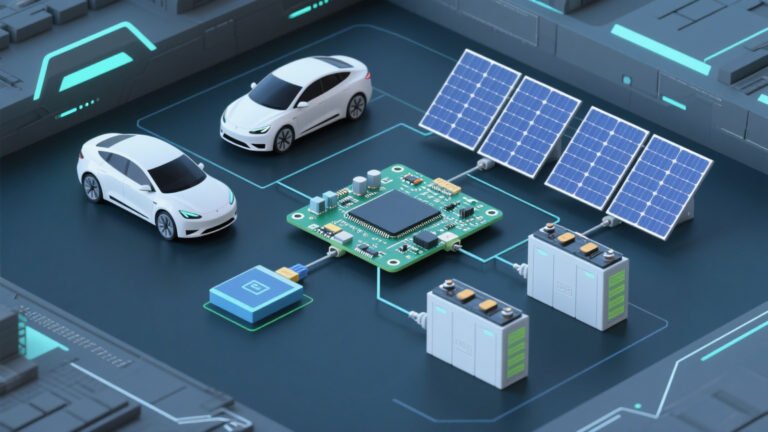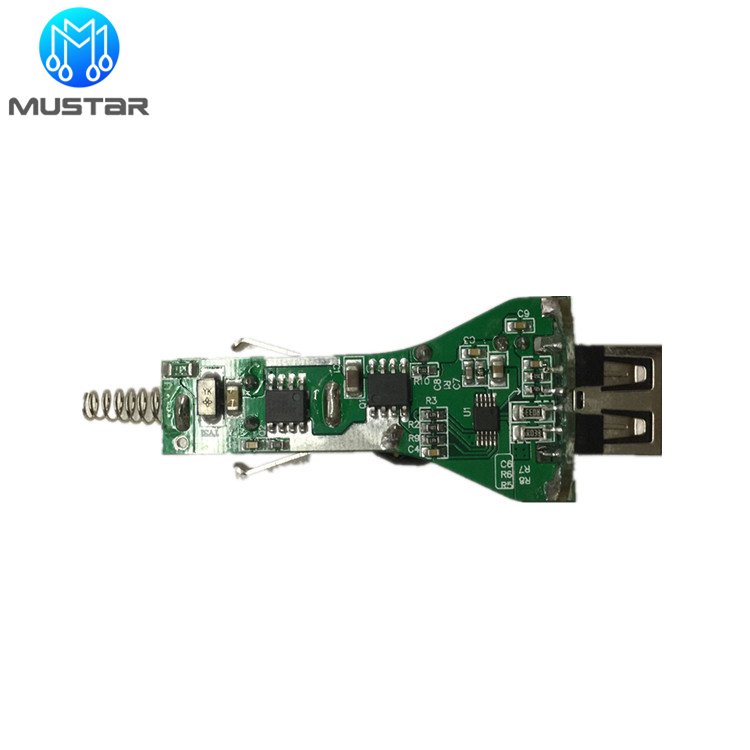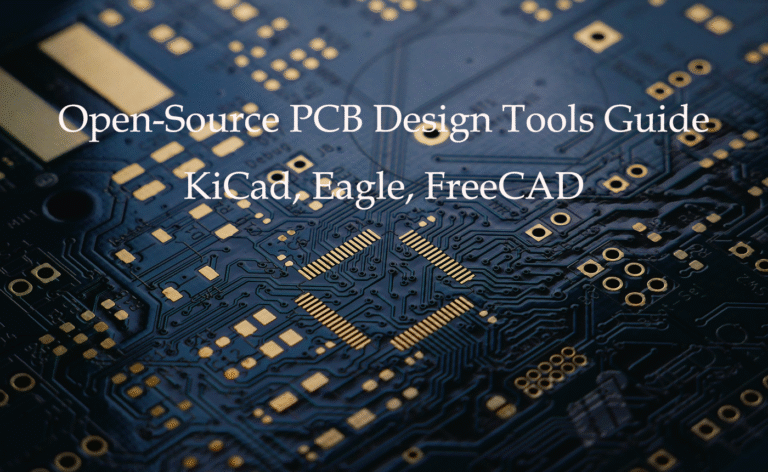🔋 Key Market Insights at a Glance
| Metric / Statistic | Value / Insight | Impact |
|---|---|---|
| Global PCB Market Size (2021) | $75 billion | Massive industry foundation |
| Projected Market Size (2030) | $120 billion | 60% growth potential |
| Annual Growth Rate (2025) | 5.5% CAGR reaching $85.4B | Steady expansion driven by EVs |
| Renewable Energy Capacity (2022) | 3,372 GW (9.6% increase) | Driving PCBA demand surge |
| Asia-Pacific Market Share | Largest regional dominance | Manufacturing hub advantage |
The PCBA for new energy applications market is experiencing unprecedented growth. As renewable energy systems become mainstream, furthermore, electric vehicles revolutionize transportation. Meanwhile, smart grids transform power distribution. Therefore, specialized printed circuit board assemblies are now essential for powering our sustainable future.
Contents
- What is New Energy PCBA?
- 4 Main Types of PCBA For New Energy Applications
- How PCBA Powers Electric Vehicles?
- Smart Grid PCBA: The Future of Energy Distribution
- Smart Grid PCBA: The Future of Energy Distribution
- Key Design Requirements for New Energy PCBA
- Market Trends and Growth Statistics
- Common Challenges in New Energy PCBA Design
- Why Choose Professional PCBA Manufacturing for New Energy
- Frequently Asked Questions
- Conclusion
What is New Energy PCBA? [Quick Definition + Key Benefits]
New Energy PCBA refers to specialized printed circuit board assemblies designed specifically for energy-efficient and sustainable technologies. Moreover, these advanced circuits optimize power usage while supporting renewable energy systems, electric vehicles, and smart grid infrastructure.
The key benefits of new energy PCBA include:
- Power Optimization: Additionally, these circuits reduce energy losses by up to 30% compared to traditional designs
- Environmental Sustainability: Furthermore, they support renewable energy integration and reduce carbon footprints
- Enhanced Reliability: Moreover, they withstand harsh environmental conditions while maintaining performance
- Cost Efficiency: Therefore, they optimize resource usage and lower operational expenses over time
According to International Renewable Energy Agency (IRENA), renewable energy capacity has grown by 9.6% annually. Consequently, this drives increasing demand for specialized PCBA solutions.
4 Main Types of PCBA For New Energy Applications
Understanding the different types of PCBA for new energy applications helps engineers select the right solution. Moreover, each type serves specific functions within the energy ecosystem.
1. Solar and Wind Energy Systems PCBA
These circuits manage power conversion from renewable sources. Additionally, they handle voltage regulation and grid synchronization. Furthermore, they include maximum power point tracking (MPPT) controllers.
2. Battery Management Systems (BMS) PCBA
BMS circuits monitor cell voltage, temperature, and current flow. Moreover, they prevent overcharging and extend battery life. Therefore, they are critical for energy storage applications.
3. Electric Vehicle Components PCBA
EV applications require high-power density circuits. Additionally, they manage motor control and regenerative braking. Furthermore, they integrate with charging infrastructure systems.
4. Smart Grid Technology PCBA
Smart grid circuits enable two-way communication between utilities and consumers. Moreover, they support demand response programs. Therefore, they optimize energy distribution efficiency.
Research from International Energy Agency (IEA) shows that these four categories represent 85% of new energy PCBA applications globally.
How PCBA Powers Electric Vehicles [Most Popular Application]
PCBA in electric vehicles represents the fastest-growing segment of new energy applications. Furthermore, the EV market drives approximately 40% of new energy PCBA demand worldwide.

Battery Management Systems
BMS PCBA monitors individual battery cells within EV packs. Additionally, it balances charging across cells and prevents thermal runaway. Furthermore, modern BMS systems integrate with vehicle telematics.
“Battery management systems using advanced PCBA can extend EV battery life by up to 25% while improving safety performance.” – U.S. Department of Energy
Motor Control Integration
EV motor controllers require high-frequency switching circuits. Moreover, they handle regenerative braking energy recovery. Therefore, power density and thermal management are critical design factors.
Thermal Management
Thermal management PCBA prevents overheating in high-power applications. Additionally, it monitors temperature sensors throughout the vehicle. Furthermore, it controls cooling systems and heat pumps.
According to McKinsey research, EV PCBA complexity has increased 300% over the past five years due to advanced features.
PCBA in Solar and Wind Energy Systems
PCBA for renewable energy systems converts variable power sources into stable grid-compatible electricity. Moreover, these circuits must operate reliably for 20-25 years in outdoor environments.
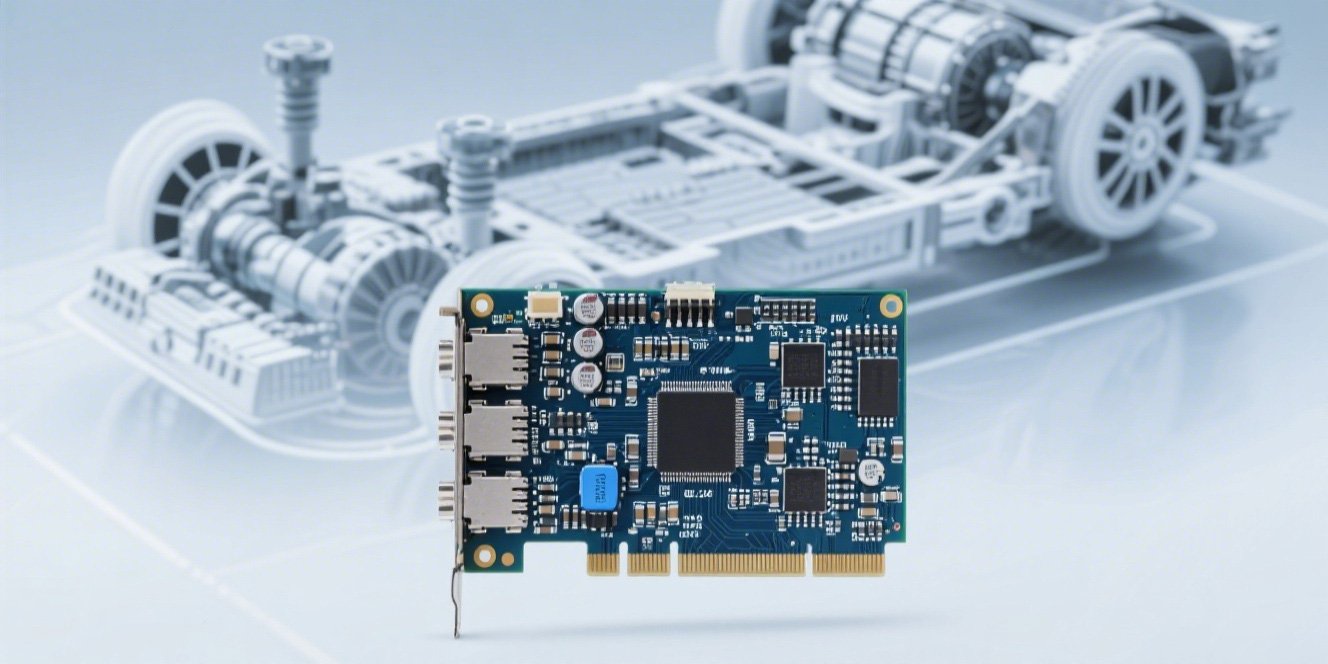
Power Conversion and Regulation
Solar inverter PCBA converts DC power to AC power for grid connection. Additionally, Maximum Power Point Tracking (MPPT) algorithms optimize energy harvest. Furthermore, grid-tie inverters synchronize with utility frequency.
Environmental Durability Requirements
Renewable energy PCBA must withstand extreme temperatures from -40°C to +85°C. Moreover, they resist humidity, salt spray, and UV radiation. Therefore, conformal coating and robust component selection are essential.
System Monitoring Integration
Modern renewable energy systems include IoT connectivity for remote monitoring. Additionally, predictive maintenance algorithms analyze performance data. Furthermore, cloud-based analytics optimize system operation.
The National Renewable Energy Laboratory (NREL) reports that advanced PCBA designs improve renewable energy system efficiency by 12-15%.
Smart Grid PCBA: The Future of Energy Distribution
Smart grid PCBA enables bidirectional communication between power providers and consumers. Moreover, these intelligent systems optimize energy distribution and integrate renewable sources seamlessly.
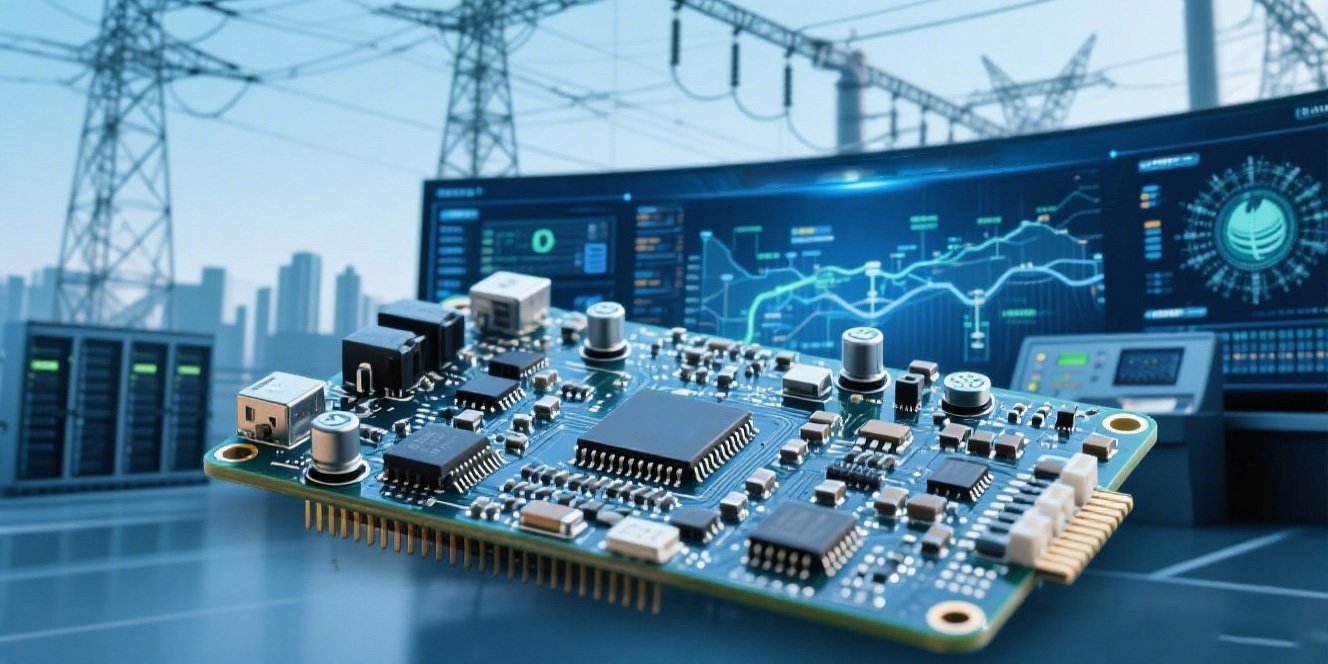
Two-Way Communication Systems
Smart grid communication PCBA enables real-time data exchange between utilities and consumers. Additionally, these systems support multiple protocols including Zigbee, WiFi, and cellular connectivity. Furthermore, advanced encryption ensures data security.
Demand-Response Mechanisms
Demand response PCBA automatically adjusts power consumption during peak periods. Moreover, it communicates with smart appliances to optimize energy usage. Therefore, consumers benefit from reduced electricity costs.
Grid Stability and Power Monitoring
Grid monitoring PCBA continuously tracks voltage, frequency, and power quality. Additionally, it detects faults and initiates protective measures. Furthermore, predictive analytics prevent outages before they occur.
The U.S. Smart Grid initiative estimates that smart grid PCBA deployment reduces energy waste by 20-25% nationwide.
Key Design Requirements for New Energy PCBA
Designing PCBA for new energy applications requires careful consideration of unique environmental and performance challenges. Moreover, these circuits must meet stringent reliability standards while optimizing cost and efficiency.
Environmental Resistance (Temperature, Humidity, Vibration)
New energy PCBA must operate reliably across extreme temperature ranges. Additionally, humidity resistance prevents corrosion in outdoor installations. Furthermore, vibration resistance ensures durability in automotive and wind applications.
- Temperature Range: -40°C to +125°C for automotive applications
- Humidity Resistance: 95% relative humidity without condensation
- Vibration Tolerance: IEC 60068-2-6 standards compliance
- Salt Spray Resistance: ASTM B117 testing for marine environments
Power Efficiency Optimization
Power efficiency directly impacts system performance and operating costs. Moreover, thermal management becomes critical in high-power applications. Therefore, component selection and layout optimization are essential.
Component Selection Criteria
New energy PCBA requires components rated for extended temperature ranges and high reliability. Additionally, automotive-grade components meet AEC-Q100 standards. Furthermore, long-term availability ensures sustainable product lifecycles.
Sustainability Considerations
Sustainable PCBA design includes RoHS-compliant materials and conflict-free sourcing. Moreover, end-of-life recyclability becomes increasingly important. Therefore, manufacturers prioritize eco-friendly processes and materials.
According to EPA Green Power Partnership, sustainable PCBA design practices reduce environmental impact by 30-40%.
Market Trends and Growth Statistics [2025 Outlook]
The new energy PCBA market demonstrates remarkable growth driven by renewable energy adoption and electric vehicle proliferation. Moreover, government incentives accelerate market expansion globally.
📈 Market Growth Analysis
| Market Segment | 2024 Value (USD) | 2030 Projection (USD) | CAGR (%) |
|---|---|---|---|
| Electric Vehicle PCBA | $12.5 billion | $28.3 billion | 14.7% |
| Solar Energy PCBA | $8.2 billion | $15.9 billion | 11.6% |
| Wind Energy PCBA | $4.1 billion | $7.8 billion | 11.3% |
| Smart Grid PCBA | $3.8 billion | $8.1 billion | 13.4% |
Regional Market Insights
Asia-Pacific dominance continues with 65% global market share in new energy PCBA manufacturing. Additionally, China leads in production capacity and cost competitiveness. Furthermore, South Korea and Japan excel in advanced technology development.
Growth Drivers and Projections
Key growth drivers include government renewable energy mandates and EV adoption incentives. Moreover, decreasing battery costs make electric vehicles more affordable. Therefore, PCBA demand correlates directly with clean energy deployment.
Market research from MarketsandMarkets projects that new energy PCBA applications will represent 45% of total PCB market value by 2030.
Common Challenges in New Energy PCBA Design
Engineers face unique challenges in new energy PCBA design that require specialized expertise and advanced solutions. Moreover, these challenges directly impact system reliability and performance.
Harsh Environmental Conditions
Outdoor renewable energy installations expose PCBA to extreme weather conditions. Additionally, temperature cycling causes thermal stress and component fatigue. Furthermore, moisture ingress leads to corrosion and electrical failures.
“Environmental stress testing is critical for new energy PCBA reliability. We’ve seen 40% failure rate reduction with proper environmental hardening.” – JEDEC Solid State Technology Association
Power Efficiency Demands
High-power applications generate significant heat that must be dissipated effectively. Moreover, power conversion efficiency directly impacts system economics. Therefore, thermal management and component selection are critical.
Cost Optimization Needs
New energy systems compete on total cost of ownership. Additionally, PCBA represents 15-25% of total system cost. Furthermore, long-term reliability reduces maintenance expenses.
Solutions and Best Practices
- Advanced Materials: Use high-TG FR-4 and polyimide substrates for temperature resistance
- Conformal Coating: Apply protective coatings to prevent moisture and contamination
- Thermal Management: Implement thermal vias and heat sinks for power dissipation
- Design for Test: Include test points and boundary scan for manufacturing quality
Industry studies from IPC International show that proper design practices reduce field failures by 60-70%.
Why Choose Professional PCBA Manufacturing for New Energy
Professional PCBA manufacturing for new energy applications ensures reliability, compliance, and cost-effectiveness. Moreover, experienced manufacturers understand the unique requirements of energy applications.
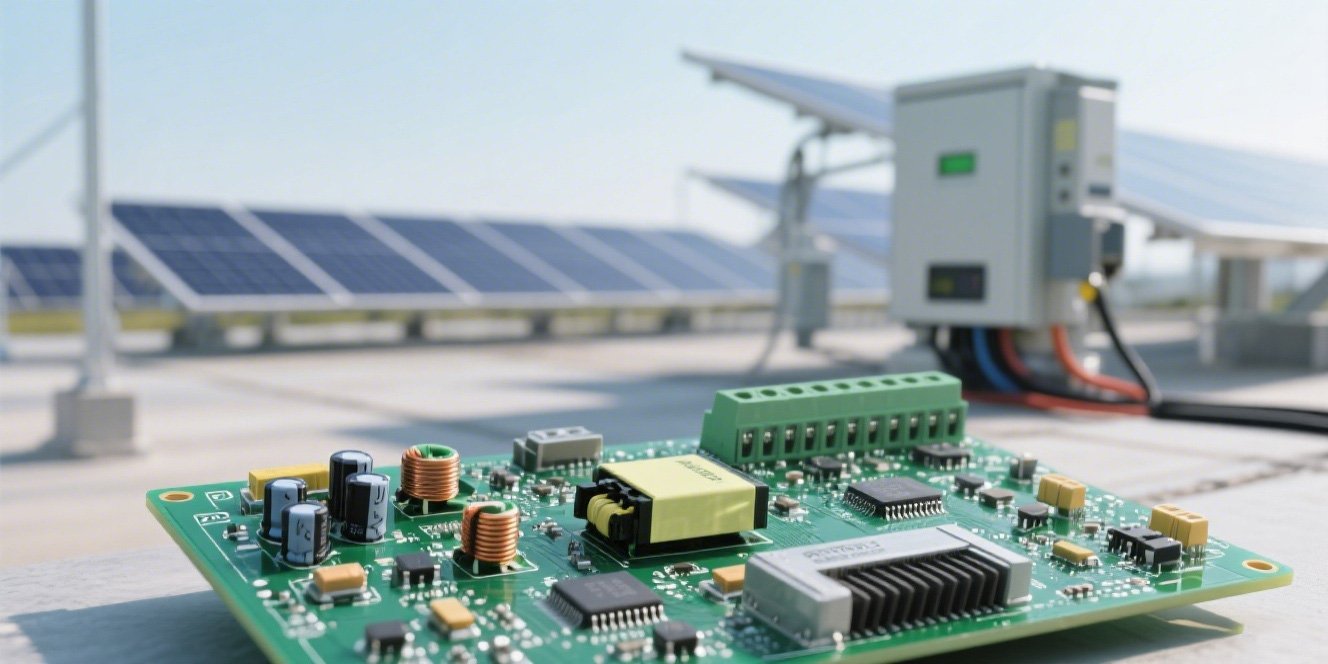
Quality and Reliability Requirements
New energy applications demand exceptional reliability with failure rates below 10 PPM. Additionally, quality systems must meet automotive and medical standards. Furthermore, traceability ensures accountability throughout the supply chain.
Certification Needs (Automotive, Medical Standards)
Professional manufacturers maintain critical certifications including:
- IATF16949: Automotive quality management system
- ISO13485: Medical device quality standards
- ISO14001: Environmental management system
- UL Recognition: Safety standards compliance
Advanced Testing Capabilities
Comprehensive testing ensures product reliability and performance. Moreover, advanced equipment detects potential failures before shipment. Therefore, customers receive fully validated products.
Mustar’s Expertise and Capabilities
Mustar brings over 25 years of experience in high-precision PCBA manufacturing. Additionally, our dedicated new energy production lines ensure consistent quality. Furthermore, our global supply chain guarantees component availability.
Key Advantages:
- 12,000 square meter facility with 600+ skilled employees
- 20 SMT lines including automotive-dedicated production
- 200+ global suppliers ensuring BOM compliance
- Advanced testing with 3D X-Ray and automated optical inspection
Customer testimonials from pcbamustar.com consistently highlight our technical expertise and reliable delivery performance.
Frequently Asked Questions
What is New Energy PCBA and why is it important?
New Energy PCBA refers to printed circuit board assemblies designed specifically to optimize power usage and energy efficiency in renewable energy systems, electric vehicles, smart grids, and energy storage devices. Moreover, they are crucial for managing energy flow, reducing losses, and promoting sustainability by enabling efficient power conversion and control.
How does PCBA contribute to renewable energy systems?
PCBA regulates voltage levels, manages power distribution, and integrates sensors for real-time monitoring. Additionally, it ensures durability under harsh environmental conditions. Therefore, renewable energy systems like solar panels and wind turbines operate efficiently and reliably.
What are the key design considerations for PCBA in new energy applications?
Important factors include environmental robustness (temperature, humidity, vibration resistance), power efficiency, component layout, and integration with control modules. Furthermore, using sustainable materials minimizes environmental impact.
How is PCBA used in electric vehicles?
PCBA plays a vital role in electric vehicles by managing battery systems, motor control, and thermal management. Moreover, it ensures optimal energy use, extends battery life, and maintains vehicle reliability even under high temperature and stress conditions.
What role does PCBA play in smart grid technology?
PCBA enables two-way communication between electricity producers and consumers. Additionally, it regulates power distribution, monitors grid conditions, and supports demand-response mechanisms to improve grid stability and integrate renewable energy sources effectively.
Conclusion: Partner with Experts for Your New Energy PCBA Success
The PCBA for new energy applications market represents one of the most dynamic and rapidly growing sectors in electronics manufacturing. Moreover, as renewable energy systems become mainstream and electric vehicles revolutionize transportation, the demand for specialized, high-reliability PCBA solutions continues to accelerate.
Successfully implementing new energy PCBA requires deep expertise in environmental hardening, power efficiency optimization, and advanced manufacturing processes. Additionally, compliance with automotive and medical standards ensures long-term reliability and market acceptance. Furthermore, partnering with experienced manufacturers provides access to cutting-edge technology and proven quality systems.
🚀 Ready to Power Your New Energy Innovation?
Mustar combines 25+ years of PCBA expertise with specialized knowledge in new energy applications. Our certified manufacturing processes, advanced testing capabilities, and global supply chain ensure your project success.
Why Choose Mustar for Your New Energy PCBA?
- ✅ IATF16949 & ISO13485 certified quality systems
- ✅ Dedicated new energy production lines
- ✅ Advanced testing with 3D X-Ray and ICT/FCT
- ✅ 200+ global suppliers ensuring component availability
- ✅ Fast prototyping with 4-8 hour PCB samples
Contact Mustar today and discover how our new energy PCBA expertise can accelerate your project from concept to market success!

